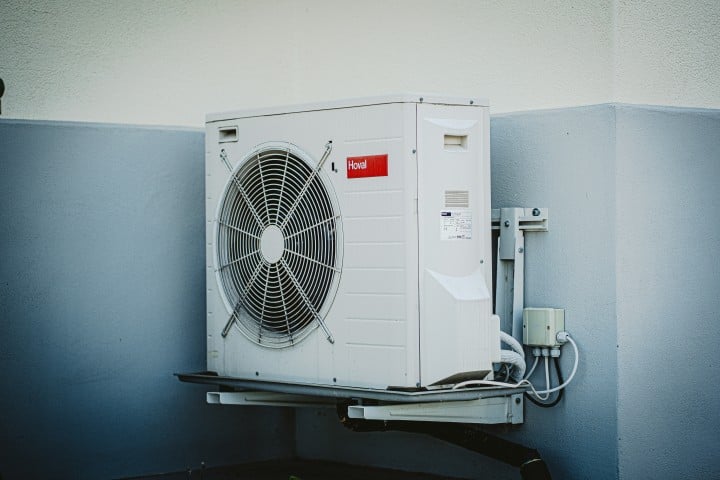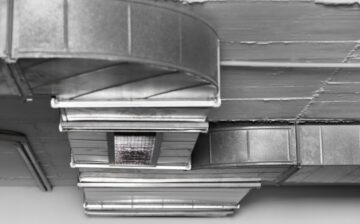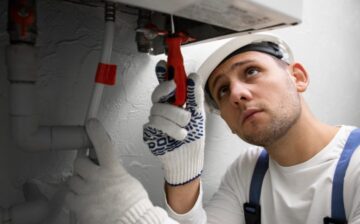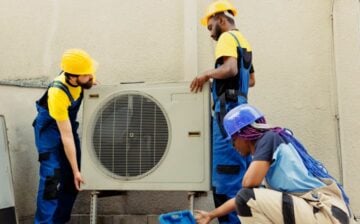In the pursuit of maintaining a comfortable and healthy indoor environment, homeowners are increasingly turning to advanced technologies such as Energy Recovery Ventilators (ERVs) and Heat Recovery Ventilators (HRVs). These innovative systems enhance indoor air quality, ensure optimal ventilation, and promote energy efficiency. At Comfort Doc Heating & Air, we understand the significance of these cutting-edge solutions and are committed to providing comprehensive insights into their functionality and benefits.

Understanding ERVs and HRVs
ERVs and HRVs are specialized ventilation systems facilitating heat and moisture exchange between the indoor and outdoor air streams. While they share the goal of improving indoor air quality, they employ distinct mechanisms to achieve this objective. ERVs are particularly adept at regulating temperature and humidity levels within the home.
These systems utilize a stationary core engineered with unique materials to exchange air and moisture between the incoming and outgoing air streams. On the other hand, HRVs focus primarily on heat exchange, utilizing a metal core to transfer heat between the incoming and outgoing air streams.
ERVs and HRVs vs. Standard HVAC Systems
It’s essential to differentiate ERVs and HRVs from standard HVAC systems. While traditional HVAC systems are primarily responsible for heating, ventilation, and air conditioning, ERVs and HRVs are dedicated to optimizing ventilation and indoor air quality. These systems work with existing HVAC setups, complementing their functionality by ensuring a continuous supply of fresh outdoor air while exhausting stale indoor air.
Enhancing Indoor Air Quality
The fundamental purpose of ERVs and HRVs is to enhance indoor air quality by promoting efficient ventilation and mitigating the buildup of pollutants and contaminants. These systems facilitate the circulation of fresh outdoor air throughout the home, ensuring a constant supply of oxygen-rich air while expelling stale indoor air. By regulating temperature and humidity levels, ERVs and HRVs create a balanced and comfortable indoor environment, reducing the risk of mold and mildew growth.
What Causes Stale Indoor Air?
Stale indoor air can come from different factors, ranging from inadequate ventilation to the presence of pollutants. Here are some common causes:
- Inadequate Ventilation: Poor ventilation is one of the primary causes of stale indoor air. Without proper ventilation, indoor air can become stagnant and trap pollutants.
- Indoor Pollutants: Indoor pollutants such as volatile organic compounds (VOCs) from cleaning products, paints, and furniture can accumulate in the air, leading to staleness.
- Moisture and Mold: Excess moisture in the air can lead to mold growth, which causes musty odors and releases spores and other allergens into the air.
- Tobacco Smoke: Smoking indoors can significantly degrade indoor air quality, producing stale and smoky air.
- Dust and Pet Dander: Accumulation of dust, pet dander, and other particulate matter can contribute to stale air and aggravate allergies.
- Cooking and Cleaning: Cooking activities and certain cleaning products can release particles and odors that can linger in the air, causing staleness.
Investing in ERVs and HRVs
Investing in ERVs and HRVs is a significant consideration for homeowners seeking to optimize indoor air quality. These advanced ventilation systems offer a compelling solution in today’s tightly sealed homes, where energy efficiency is a top priority. By providing a continuous supply of fresh air and effectively managing temperature and humidity, ERVs and HRVs contribute to a healthier and more comfortable living environment.
Why Would Homeowners Choose ERVs and HRVs Over Other IAQ Technology?
ERVs and HRVs offer several advantages over other indoor air quality (IAQ) technologies, making them appealing choices for homeowners:
- Fresh Air Circulation: ERVs and HRVs effectively bring in fresh outdoor air while expelling indoor air, promoting better air circulation and reducing the buildup of indoor pollutants.
- Humidity Control: ERVs and HRVs help regulate indoor humidity levels by transferring moisture between the incoming and outgoing air streams. This can be particularly beneficial in climates with extreme temperature and humidity variations.
- Pollutant Removal: These ventilation systems help remove indoor air pollutants such as volatile organic compounds (VOCs), cooking odors, and other contaminants, contributing to a healthier indoor environment.
- Comfort and Health: By providing constant fresh air, ERVs and HRVs enhance comfort and overall well-being for occupants, especially those with respiratory issues or allergies.
In summary, the ability of ERVs and HRVs to provide fresh air, improve energy efficiency, control humidity, and remove indoor pollutants makes them preferred choices for homeowners seeking to enhance their indoor air quality.
Maintenance and Longevity
While ERVs and HRVs operate efficiently with minimal maintenance, adhering to a regular maintenance schedule ensures optimal performance and longevity. Routine inspections and cleaning of the ventilation components, including the core and fans, are crucial to prevent the accumulation of dust and debris. Additionally, professional servicing by experienced technicians, such as those at Comfort Doc Heating & Air, can address any potential issues and ensure the continued functionality of these vital systems.
When Would ERVs and HRVs Not Be a Good Idea?
In most cases, ERVs and HRVs are beneficial for indoor air quality and energy efficiency. However, there are situations where using them may not be advisable:
- Extreme Climate Conditions: In regions with sweltering and humid or cold climates, ERVs and HRVs may not be as effective, as they may struggle to recover energy efficiently.
- Poor Maintenance: If the ERVs and HRVs are not properly maintained, they can become breeding grounds for mold and bacteria, leading to indoor air quality issues.
- Specific Allergies or Sensitivities: For individuals with severe allergies or sensitivities to outdoor allergens, using ERVs and HRVs may introduce allergens into the indoor air, causing discomfort.
- Space Limitations: Installing ERVs or HRVs in small living spaces may not be practical or provide significant benefits.
In these scenarios, alternative ventilation and air quality control strategies must be considered to ensure the health and comfort of the occupants.
Final Thoughts
ERVs and HRVs represent a significant advancement in indoor air quality and ventilation. At Comfort Doc Heating & Air, we recognize the pivotal role of these systems in creating a healthier and more comfortable home environment. By investing in ERVs and HRVs, homeowners can elevate their indoor air quality, promote energy efficiency, and uphold a commitment to overall well-being.
Our team is dedicated to providing expert guidance and unparalleled service, ensuring our valued customers experience the utmost comfort and satisfaction in their homes.
We hope you found this blog post on How Do ERVs And HRVs Improve Your Home’s Indoor Air Quality? useful. Be sure to check out our post on Improve Workplace Indoor Air Quality for more great tips!
Have Experience in the Moving Industry? Want an Additional Income Stream? Work With All Around Moving!
By creating a new revenue stream, you can increase your earnings. We’ll be there for you at every turn of the road. Click here to learn more.





